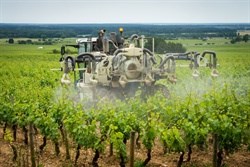
President Zuma said a land audit has been completed which will assist to identify further land for reform purposes.
According to the President, the question of land remains a fundamental issue for those who were dispossessed in the notorious 1913 Native Land Act.
In 1994, 83 percent of agricultural land was owned by whites with only 17 percent being available to the black majority in the former homelands.
However, government introduced the Land Redistribution Programme in 1994.
President Zuma said since then, government has redistributed 9.4 million hectares of land, benefiting almost a quarter of a million people.
The target had been 30 percent of the agricultural land owned by white South Africans. As the Review indicates, only 24 percent of black households are involved in agriculture, and very few commercial farms are owned by black people.
President Zuma said some laws are being finalised which will assist to improve the pace in the implementation of the land reform programme.
These include improving land valuation mechanisms and also re-opening land claim opportunities for claimants who missed the opportunity in 1998.
A 2013 report of the Food and Agriculture Organisation of the United Nations assessing the state of food insecurity in the world established South Africa as one of only three African countries that are food secure. Also, the country is earmarked for recognition by the UN as one of two African countries that have performed well on the Millennium Development Goals as measured by the total population that is undernourished.
South Africa has joined other African Heads of State at the January 2014 Summit in a breakthrough commitment to eliminate hunger on the continent by 2025. The new 2025 African Union target aligns South Africa and the continent with the Zero Hunger Challenge launched by UN Secretary-General, Ban Ki-Moon in 2012.
Yet, despite these achievements Statistics South Africa's General Household Survey indicates that between 10 percent and 15 percent of households were still vulnerable to hunger in 2011. It also indicated that 22.7 percent of the population - or 13.8 million people - have insufficient access to food and many households continue to experience difficulty in accessing food, particularly in rural areas.
According to the 20 Year Review, the underlying causes of these challenges include a declining trend in subsistence food production, the cost of food relative to the incomes of the poor and poor dietary habits leading to malnutrition.
Government's social assistance grant programmes, its initiatives to develop smallholders, and nutrition education programmes are all aimed at addressing these causes.
The Department of Rural Development and Land Reform (DRDLR) has since 2009 introduced several rural development initiatives, including the Comprehensive Rural Development Programme (CRDP).
The creation of decent work and sustainable livelihoods lies at the heart of the CRDP. The programme commits itself to ensuring that at least one person in each rural household is employed for a minimum of two years.
The CRDP has been developed as a multisectoral response to the challenge of rural development, addressing basic human needs, as well as the provision of social and economic infrastructure and the development of small and medium enterprises, using an agri-village model.
Under the agri-village model, housing, sanitation, health, education and other basic services are provided to an agricultural village. In addition, there should be sustainable agriculture-related income-generating activities in the village.
A month after it was approved by Cabinet in 2009, President Jacob Zuma officially unveiled the CRDP in Muyexe village, Limpopo.
The programme is being implemented as a pilot programme. By 2013 it had covered 95 of a targeted 160 wards across the country.
The Review says that rolling out the CRDP programme to all rural areas would be prohibitively expensive and result in the duplication of services already offered by other government departments and municipalities. "Going forward, the Department of Rural Development and Land Reform will need to increasingly focus on coordinating and facilitating economic development in the poorer rural municipalities," it notes.
The National Rural Youth Service Corps (Narysec) was also introduced by the department in 2010 and is making a contribution to youth employment and skills development in rural areas.
The Narysec programme will complement the department's job creation model, which targets and ensures that at least one person per each household in the rural areas where the CRDP is being piloted, gets employed and that such employment is linked to skills development.
SAnews.gov.za is a South African government news service, published by the Government Communication and Information System (GCIS). SAnews.gov.za (formerly BuaNews) was established to provide quick and easy access to articles and feature stories aimed at keeping the public informed about the implementation of government mandates.
Go to: http://www.sanews.gov.za